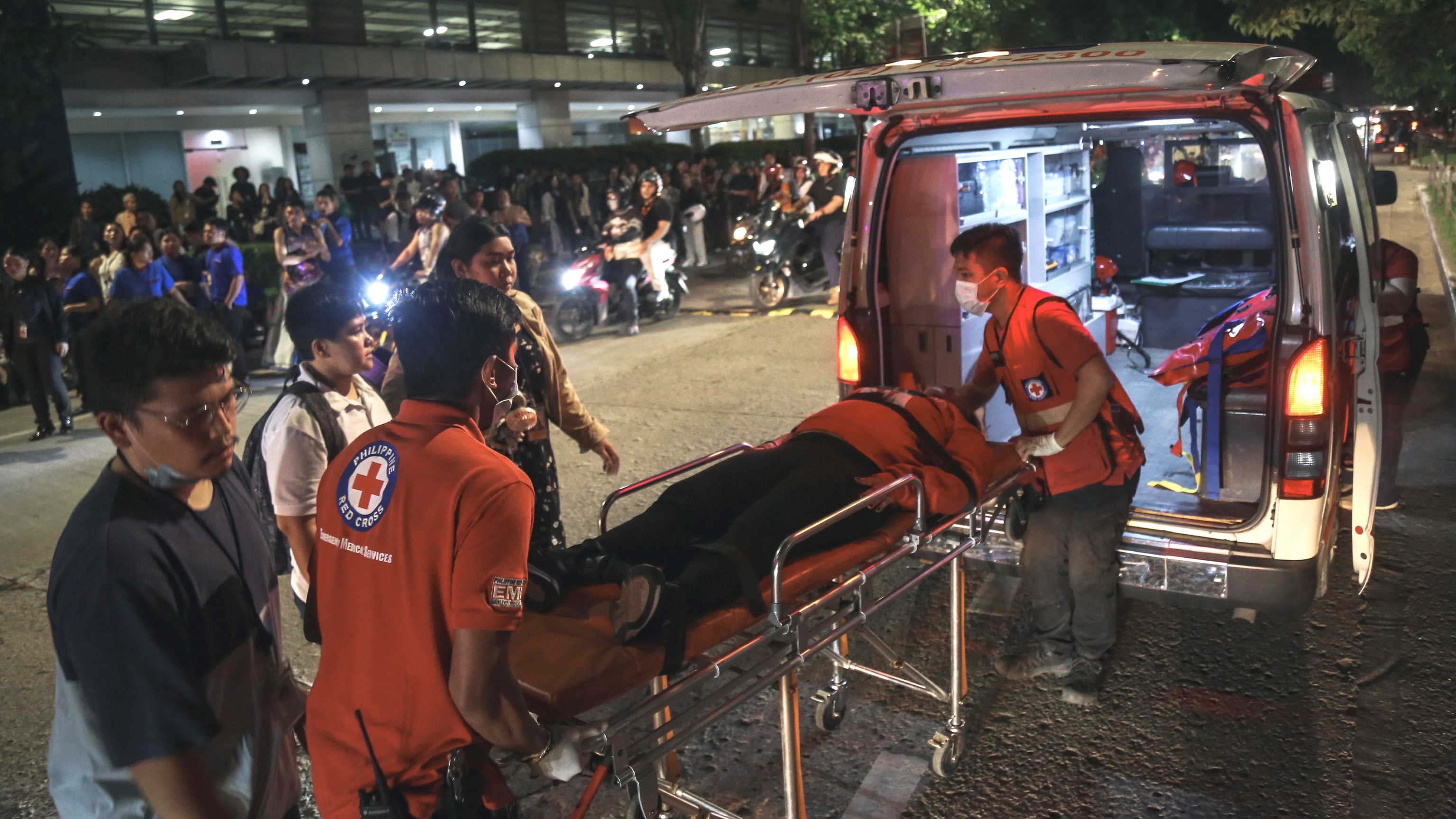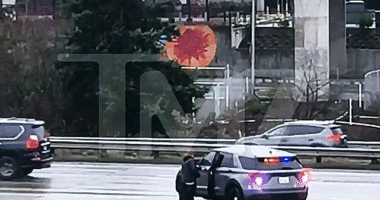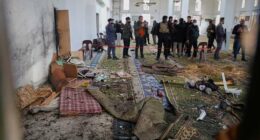Share this @internewscast.com
MANILA, Philippines — A 6.9 magnitude earthquake struck offshore in the central Philippines on Tuesday evening, causing walls of houses and buildings to collapse. The quake resulted in at least 31 deaths and numerous injuries, as residents fled their homes into the darkness when the powerful tremor disrupted electricity, officials reported.
The quake’s epicenter, triggered by a local fault at a depth of 5 kilometers (3 miles), was located approximately 19 kilometers (12 miles) northeast of Bogo, a coastal city home to around 90,000 people in Cebu province. Rex Ygot, a disaster-mitigation officer, informed The Associated Press by phone that the city of Bogo had suffered at least 14 fatalities.
The number of casualties in Bogo is expected to increase. Rescue workers are attempting to transport a backhoe to speed up search and rescue operations in a small mountain community where a landslide occurred, blocking shanties with debris, he mentioned.

Medical teams were seen loading a resident into an ambulance as others remained outside structures, having evacuated after the strong earthquake hit Cebu city, central Philippines, on Tuesday, September 30, 2025.
AP Photo/Jacqueline Hernandez
“It’s challenging to move around the area due to various hazards,” said Glenn Ursal, another disaster-mitigation officer, explaining to The AP that some survivors have been taken to a hospital.
In Medellin town, near Bogo, at least 12 residents, mostly small family members, lost their lives when ceilings and walls collapsed on them, some while they were asleep, according to Gemma Villamor, head of the town’s disaster-mitigation office, speaking to The AP.
In San Remigio town, also near Bogo, five people, consisting of three coast guard personnel, a firefighter and a child, were killed separately by collapsing walls while trying to flee to safety from a basketball game that was disrupted by the quake, the town’s vice mayor, Alfie Reynes, told the DZMM radio network.
Reynes appealed for food and water, saying San Remigio’s water system was damaged by the earthquake.
Aside from houses in Bogo, the quake damaged a fire station and concrete and asphalt roads, firefighter Rey Cañete said.
“We were in our barracks to retire for the day when the ground started to shake and we rushed out but stumbled to the ground because of the intense shaking,” Cañete told The AP, adding that he and three other firemen sustained cuts and bruises.
A concrete wall in their fire station collapsed, Cañete said. He and fellow firefighters provided first-aid to at least three residents, who were injured by falling debris and collapsed walls.
Hundreds of terrified residents gathered in the darkness in a grassy field near the fire station and refused to return home hours after the earthquake struck in Bogo. Several business establishments visibly sustained damages and the asphalt and concrete roads where they passed had deep cracks, Cañete said, adding that an old Catholic church in Daanbantayan town near Bogo was also damaged.
Cebu Gov. Pamela Baricuatro said the extent of the damage and injuries in Bogo and outlying towns in the northern section of the province would not be known until daytime. “It could be worse than we think,” he said in a video message posted on Facebook.
The Philippine Institute of Volcanology and Seismology briefly issued a tsunami warning and advised people to stay away from the coastlines in Cebu and in the nearby provinces of Leyte and Biliran due to possible waves of up to 1 meter (3 feet).
Teresito Bacolcol, director of the institute, said the tsunami warning was later lifted with no unusual waves being monitored.
Cebu and other provinces were still recovering from a storm that battered the central region on Friday, leaving at least 27 people dead mostly due to drownings and falling trees, knocking out power in entire cities and towns and forcing the evacuation of tens of thousands of people.
The Philippines, one of the world’s most disaster-prone countries, is often hit by earthquakes and volcanic eruptions due to its location on the Pacific “Ring of Fire,” an arc of seismic faults around the ocean. The archipelago is also lashed by about 20 typhoons and storms each year.
Copyright © 2025 by The Associated Press. All Rights Reserved.

















